Thomas J. Mittermaier
Compact Uniform Circular Quarter-Wavelength Monopole Antenna Arrays with Wideband Decoupling and Matching Networks
May 19, 2021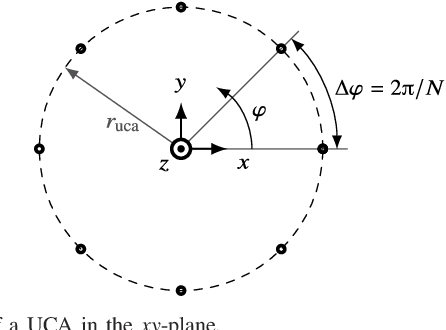
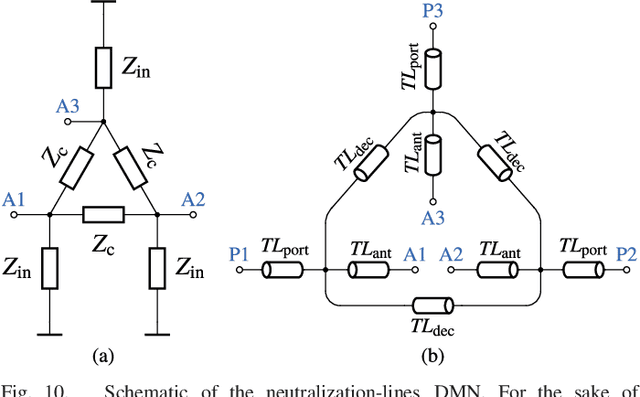
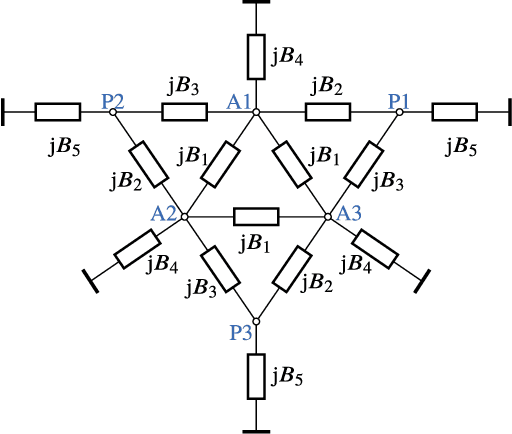
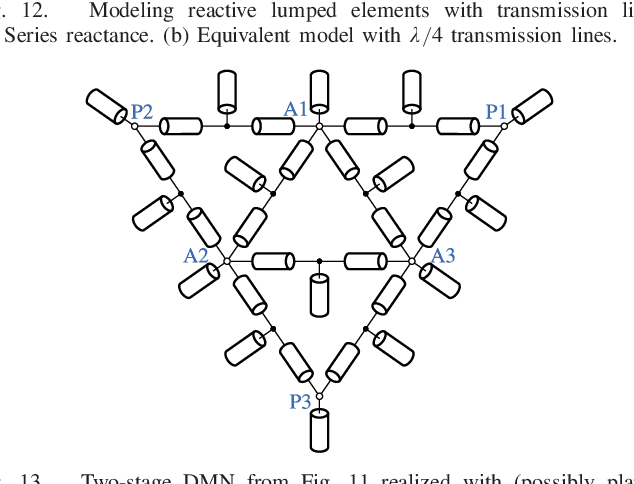
Abstract:Two novel decoupling and matching networks (DMNs) in microstrip technology for three-element uniform circular arrays (UCAs) are investigated and compared to a more conventional DMN approach with simple neutralization lines. The array elements are coaxially-fed quarter-wavelength monopole antennas over a finite groundplane. Three-element arrays are considered since UCAs with an odd number of elements are able to provide an almost constant maximum array factor over the whole azimuthal angular range. The new designs are explained from a theoretical point of view and their implementations are compared to four- and three-elements UCAs without DMN in terms of decoupling and matching bandwidth as well as beamforming capabilities. In addition to excellent decoupling and matching below -16 dB, a broader bandwidth is obtained by the two DMNs. The reasons for the enhanced bandwidth are similar in both cases: By introducing several circuit elements offering additional degrees of freedom, matching of the monopole input impedances at different frequencies becomes feasible. One of the presented designs offers a larger bandwidth, while the other design is able to provide a better total efficiency. Scattering parameters, radiation patterns, beamforming capabilities, and enhanced gain are all verified by measurements over the operating bandwidth.
* 15 pages, 28 figures, 1 table, published in IEEE Transactions on Antennas and Propagation
A Millimeter-Wave Self-Mixing Array with Large Gain and Wide Angular Receiving Range
May 18, 2021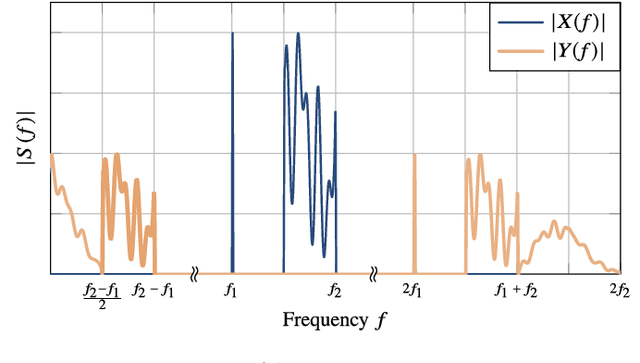
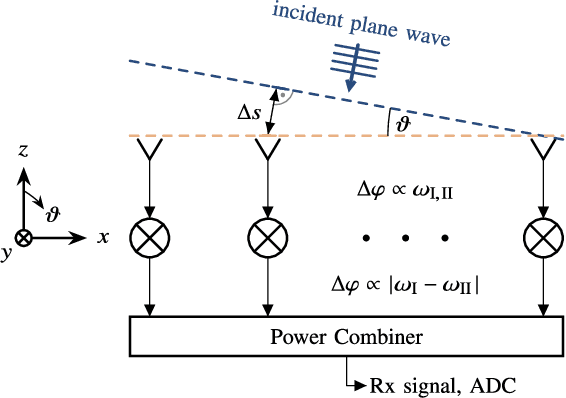


Abstract:The concept of self-mixing antenna arrays is presented and analyzed with respect to its beneficial behavior of large gain over a wide angular range. The large gain is attained by an antenna array with large element spacing, where all array element signals are combined approximately coherently over the entire angular receiving range. This functionality is achieved by the self-mixing principle, where an exact description via an intermediate frequency (IF) array factor is derived. For verification purposes, a 4 x 2 self-mixing array is fabricated and measured in the frequency range from 34 GHz to 39 GHz. A multiple-resonances millimeter-wave microstrip patch antenna has been especially developed to achieve large bandwidth and a wide angular receiving range. The broad beamwidth is achieved by two parasitic patches and suitable radiation characteristics of the resonant modes. The self-mixing of the receive signal is realized at each antenna element by a Schottky diode with an optimized operating point. The down-converted array element signals are then combined and measured at the IF. The receive power is increased significantly over a large angular range as compared to conventional array feeding techniques. The simulation results are verified by measurements, which show very good agreement.
* 10 pages, 15 figures, published in IEEE Transactions on Antennas and Propagation
 Add to Chrome
Add to Chrome Add to Firefox
Add to Firefox Add to Edge
Add to Edge